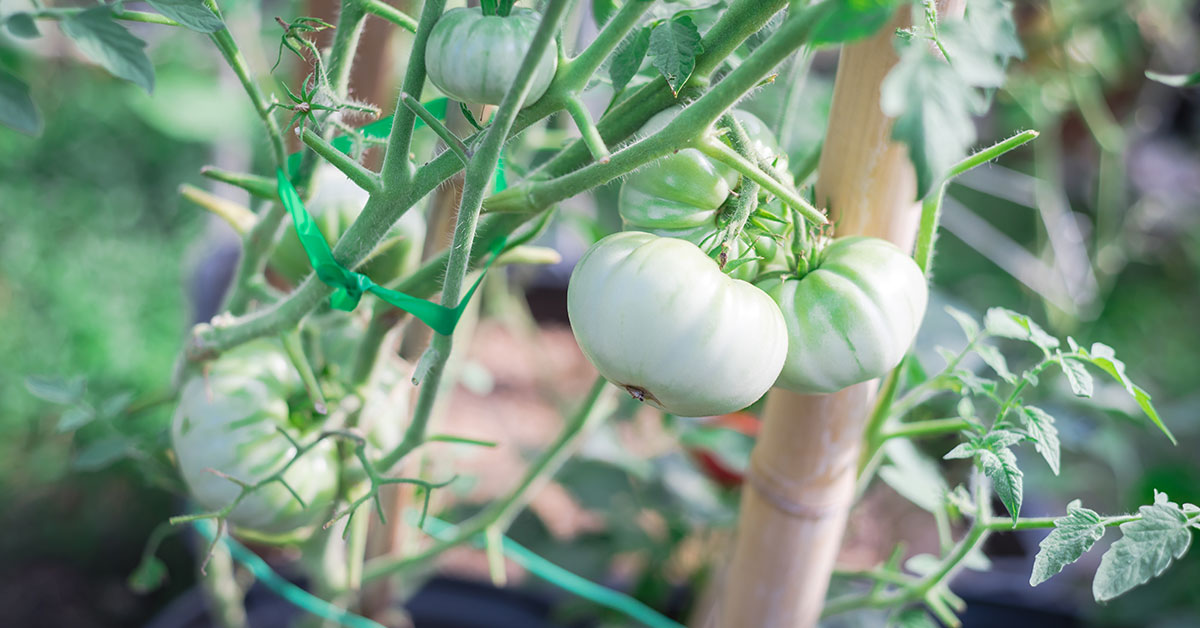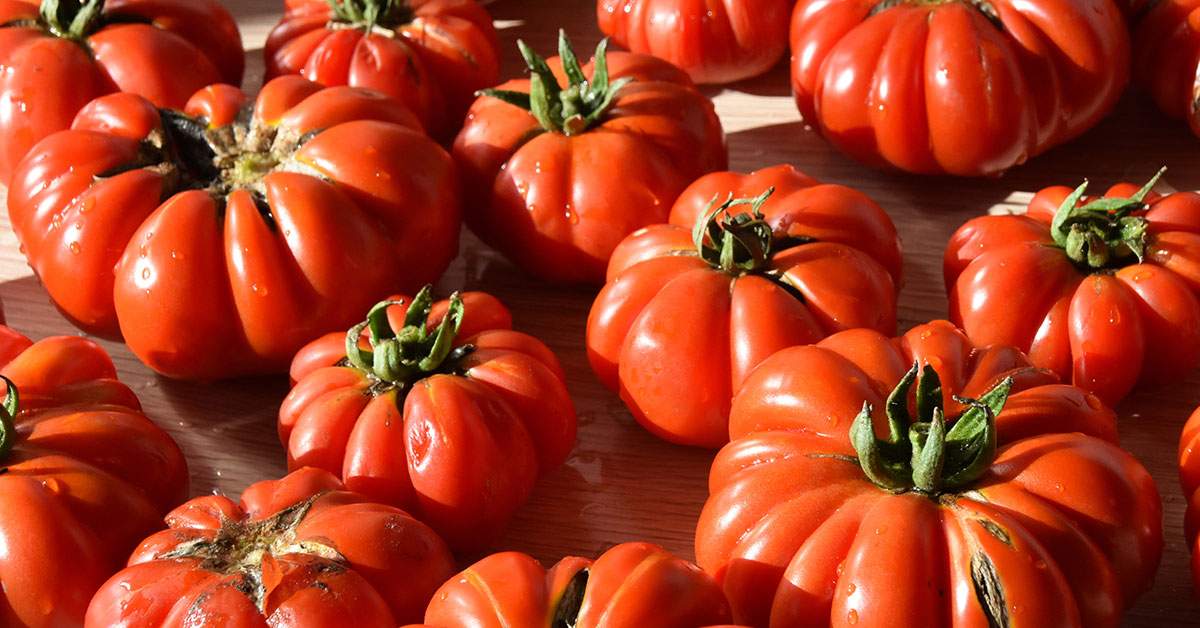The White Wonder tomato is a unique and stunning variety that is sure to catch the eye of any gardener or food enthusiast. This tomato’s distinctive appearance is characterized by its ivory-white, smooth skin and juicy flesh.
Unlike most traditional red tomatoes, the White Wonder tomato is a rare breed that offers a refreshing change in color and taste. It is a versatile vegetable that can be used in a variety of dishes, cooked or raw, and is a perfect addition to any garden. In this blog post, we will explore the history, characteristics, and benefits of the White Wonder tomato.
What is a White Wonder Tomato?
White Wonder tomato is a unique variety of tomato that stands out from the regular red tomatoes. As the name suggests, the tomato is white in color and has a mild, sweet flavor. The fruit of the White Wonder tomato is medium-sized and has a smooth skin that is easy to peel.
The White Wonder tomato is often referred to as an heirloom variety, which means it has been passed down from generation to generation. The tomato was first introduced in the early 1900s and has been a favorite among gardeners for its unique taste and appearance.
This tomato is not only beautiful but also nutritious. It is a good source of vitamins A, C, and K, as well as potassium and fiber. The White Wonder tomato is also low in calories, making it an excellent choice for those on a diet.
This tomato is easy to grow and can be grown in containers or in the ground. It requires full sun and well-drained soil. The White Wonder tomato is also resistant to many common tomato diseases, making it a great choice for gardeners who want a low-maintenance plant.
In summary, the White Wonder tomato is a unique and delicious variety of tomato that is easy to grow and packed with nutrition. It is an excellent choice for gardeners who want to add a little variety to their garden, and for those who want to try something new and delicious.
How to start White Wonder tomato seeds
Starting tomatoes from seed is a cost-effective and rewarding way to grow your own tomato plants. To begin, choose the tomato varieties that suit your preferences and growing conditions.
Fill seed trays or pots with a lightweight and well-draining seed starting mix, plant the seeds at the recommended depth, and provide adequate moisture and warmth for germination.
Once the seedlings have developed their second set of true leaves, they can be transplanted into larger containers or individual pots. Gradually acclimate the seedlings to outdoor conditions before transplanting them into the garden.
By following these basic steps, you can successfully start tomatoes from seed and enjoy a thriving crop of homegrown tomatoes.
Additional Resource: Our comprehensive guide to starting tomatoes from seed
Growing & care
Transplanting and caring for tomatoes outdoors involves a few essential steps. First, choose a sunny location with well-drained soil. Prior to transplanting, harden off the seedlings by gradually exposing them to outdoor conditions.
Dig a hole slightly larger than the root ball of each seedling and plant them, burying the stem up to the first set of leaves. Water the seedlings thoroughly after transplanting. Provide consistent watering, aiming for 1-2 inches of water per week.
Stake or cage the plants for support and prune indeterminate varieties by removing suckers. Monitor for pests and diseases, taking prompt action if necessary. By following these steps, you’ll set your tomato plants up for healthy growth and a fruitful harvest.
Additional Resource: How to transplant and care for tomatoes outdoors
Common tomato pests and diseases
Tomatoes are susceptible to various pests and diseases that can affect their health and productivity. Some common tomato pests include aphids, tomato hornworms, whiteflies, and cutworms. These pests can cause damage to leaves, stems, and fruit, leading to reduced plant vigor and yield.
Additionally, tomato plants can be affected by diseases such as early blight, late blight, fusarium wilt, and verticillium wilt. These diseases can cause leaf discoloration, wilting, and fruit rot. Proper identification and timely intervention are crucial to effectively manage these pests and diseases and ensure the successful growth of tomato plants.
Additional Resource: Comprehensive list of tomato diseases and pests and how to fix them
Common problems
If you’re growing White Wonder tomatoes, there are a few common problems you may encounter. Here are some of the most common issues and how to address them:
- Blossom End Rot: This is a common problem with many tomato varieties, and White Wonder is no exception. Blossom end rot is caused by a calcium deficiency in the soil, which leads to black or brown spots on the bottom of the fruit. To prevent this problem, ensure that your soil is rich in calcium and that your plants receive consistent watering.
- Leaf Curl: Leaf curl is often caused by environmental stress, such as high heat or low humidity. To prevent this problem, make sure your plants are well-watered and that the soil is kept moist. You may also want to consider providing some shade during the hottest parts of the day.
- Cracking: Cracking can occur when there is a sudden change in temperature or moisture levels. To prevent this problem, try to keep your plants consistently watered and provide some protection from extreme weather conditions.
- Pest Infestations: White Wonder tomatoes are susceptible to a variety of pests, including aphids, whiteflies, and tomato hornworms. To prevent these pests from taking over your garden, make sure to regularly inspect your plants for signs of infestation and take action immediately if you see any pests.
By taking these steps, you can help ensure a healthy and bountiful harvest of White Wonder tomatoes.
Uses for White Wonder tomatoes
White Wonder tomatoes are a unique variety of tomato that are not as well-known as some of their more common counterparts. However, these tomatoes have a lot to offer and can be used in a variety of ways in the kitchen.
One of the most common uses for White Wonder tomatoes is in salads. Their crisp texture and mild flavor make them a perfect addition to any salad, adding color and depth to the dish. They can be used as a substitute for other varieties of tomatoes in any recipe, or simply enjoyed on their own.
Another popular use for White Wonder tomatoes is in sauces and salsas. They have a slightly sweet flavor and low acidity, which makes them a great option for those who prefer a milder taste. They can be used in a variety of sauces, from pasta to pizza, and can even be roasted and pureed to make a delicious tomato soup.
White Wonder tomatoes are also great for canning and preserving. Their firm texture and mild flavor make them a great option for canning whole or in slices. They are also a popular choice for making tomato juice, as they produce a bright, clear juice with a sweet flavor.
In summary, White Wonder tomatoes are a versatile variety that can be used in a variety of ways in the kitchen. Their mild flavor and firm texture make them a great addition to salads, sauces, salsas, and even canned goods. If you’re looking for a unique and flavorful tomato to try, White Wonder is definitely worth considering.













